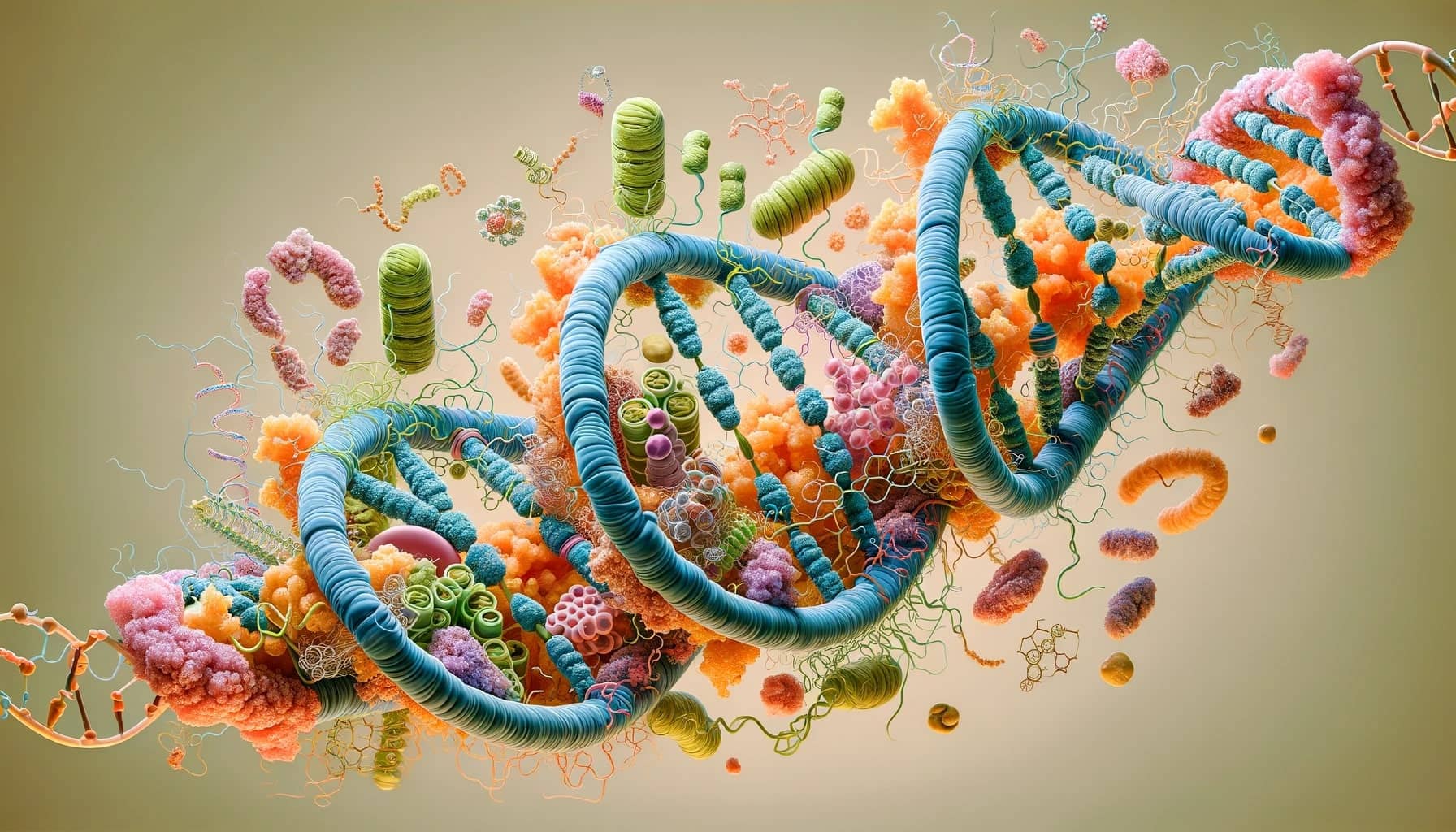
The Hidden Culprits of Aging: Mitochondrial DNA and Nuclear Architecture
In the quest to understand aging, we often overlook mitochondrial DNA (mtDNA), a distinct genetic component in the mitochondria, the cell’s energy factories. MtDNA, more susceptible to aging and related diseases, lacks the robust protective and repair mechanisms of nuclear DNA, making it more prone to damage. This vulnerability, heightened by a high replication rate and residence in an environment with oxidative stress, becomes more pronounced with age, as mutations and deletions in mtDNA accumulate across various tissues. The concept of “heteroplasmy,” where mutated and normal mtDNA coexist in a single cell, further deepens our understanding. Recent advancements in sequencing technologies have revealed the accumulation of these mtDNA mutations, especially in older cells.
MtDNA’s Role in Aging and Disease
The implications of mtDNA in aging are significant. Conditions stemming from mtDNA damage often mirror aging processes, suggesting a deeper connection. Experiments with mice, particularly those lacking the essential DNA repair enzyme DNA polymerase gamma, have shown that mtDNA deletions can lead to accelerated aging and shortened lifespans. These findings highlight the potential benefits of mtDNA maintenance or repair for healthspan and longevity.
Nuclear Architecture’s Influence on Aging
However, the aging story also involves the architecture of cell nuclei. The nuclear lamina, a structural network within the nucleus, supports DNA and associated proteins. Mutations in this network, disrupting genome stability, are associated with rapid aging disorders like Hutchinson-Gilford and Nestor-Guillermo progeria syndromes, characterized by accelerated aging due to specific genetic mutations linked to the nuclear lamina.
Deterioration of Nuclear Lamina in Normal Aging
We also observe similar patterns of nuclear lamina deterioration, such as the reduction of lamin B1 protein, in normal aging. Research in various models has shown how defects in the nuclear lamina can trigger stress responses and impact vital cellular functions, including those of stem cells.
Emerging Therapies Targeting Nuclear Lamina
Yet, there is hope. Emerging therapies aimed at correcting nuclear lamina irregularities have shown potential in slowing down aging characteristics and extending lifespans in progeria mouse models. These therapies, ranging from gene editing to drug interventions, developed initially for progeria, also show promise in moderating standard aging effects.
Conclusion: A New Frontier in Aging Research
In conclusion, mitochondrial DNA and nuclear architecture are integral yet often underappreciated factors in the aging process. Unraveling and potentially targeting these elements could lead to novel treatments, offering not just longer life but also improved quality in our twilight years.
